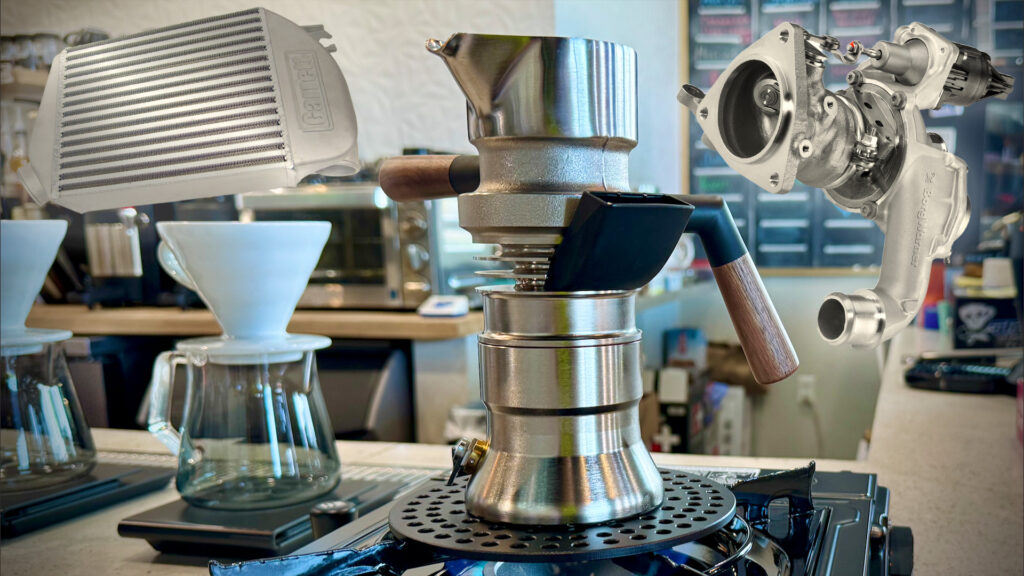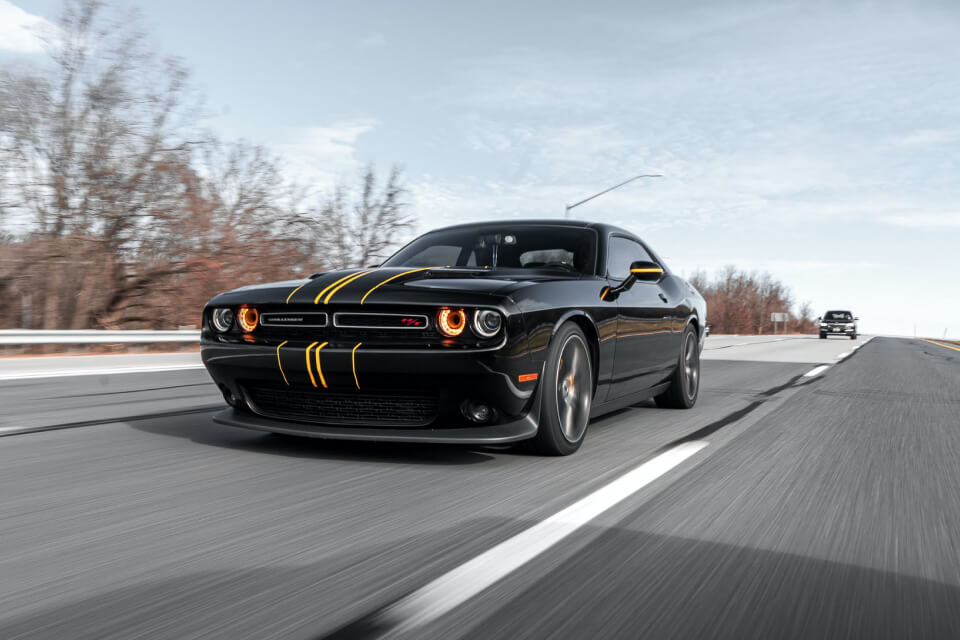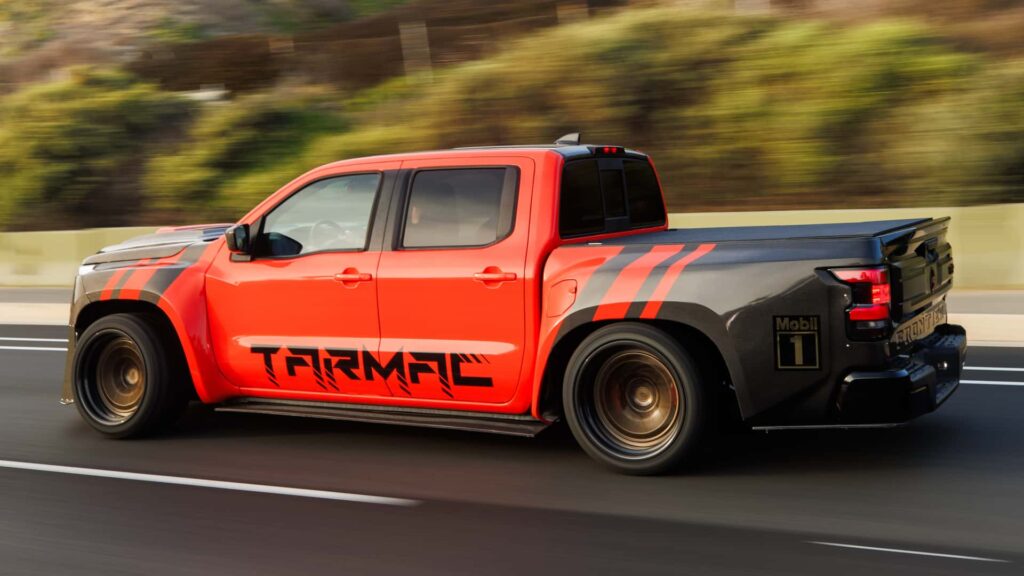
While testing the 9Barista Espresso maker, I kept thinking about turbocharged engines. More specifically, I was thinking about controlling boost pressure and charge cooling and how they affect performance. This stove-top espresso maker is based on accurately controlling those variables. The design of the machine comes from the mind of a jet engine engineer. Since we’re here in The Drive Garage, it seems appropriate to use engines to explain coffee.
A turbocharger isn’t a complex device. The basic theory goes back almost 3,000 years to the first windmills and waterwheels that harnessed kinetic energy in moving fluid and turned it into more usable shaft-driven mechanical energy. Inside those two round housings of a turbo, you have the turbine wheel that is spun by exhaust gasses exiting the engine. That connects, via a shaft, to a compressor wheel that forces more air into an engine than what it could pull in on its own. An espresso machine is also very simple. It uses a pressurized boiler to force hot water through coffee grounds to extract more chemical compounds than you would from non-pressurized methods. Like a turbocharger, more pressure is more performance—up to a point.
Espresso dates back to 1901. While most modern machines use electric pumps to create pressure, some use an electric boiler to create steam pressure. The first machines used an open flame to heat the boiler. The 9Barista espresso maker has that in common with them, although you can use whatever kind of stove you desire. I used a camp stove; FIRE. My turbocharger analogy isn’t ending with using combustion heat to power a machine. This espresso machine also employs both air and water charge cooling. There’s also a wastegate to stop over boosting. I will even attempt to make a slightly strained comparison to a blow-off valve.
I’ve already gotten ahead of myself. Congratulations, if you’re reading this you’re a guinea pig. I’m using this review to field test ideas for a new series I’m calling Nerd Lounge; named for the library and study room in the engineering department at my college. Unlike the student union or regular campus library, students in Nerd Lounge were free to discuss math, science, physics, and most importantly engineering without getting the side-eye from the humanities majors. In my years as an automotive journalist, I’ve gotten to spend time with the top designers, engineers, and racers in the business. One thing I’ve found with the car industry’s highest achievers is that they aren’t just car-obsessed. They love machines, they love art, and they are passionate about anything that involves a process.
The Bottom Line
The 9Barista Espresso Machine is not a utility purchase. At $550 there are definitely cheaper ways to get your morning coffee fix. Nobody can say they need to buy a 911 or a Corvette. But far more people want them, than can afford them. This coffee maker is a splurge far more people can afford, while still being just as hard to justify.
This is a product that is designed and built as a passion project. The 9Barista is engineered by a guy who spends his days agonizing over jet engines. It’s obvious in the quality and construction from the second you pick up the brewer. It’s easier to use than other machines with added bonus of being portable. I did my testing with a camp stove. If you combine that with a hand grinder, you have a kit perfect for apocalypse, or just camping.
As you might expect, the 9Barista is serviceable and will likely last for decades. Compared to other machines meant to last right up until the owner loses interest in making their own espresso. The quality of shots is equal to those from good coffee shops. This isn’t a product for everyone. But for coffee aficionados, and fans of well engineered machines, this the 9Barista is something to cherish.
| 9Barista Espresso Machine | |
|---|---|
| Quality | 10/10 |
| Ease Of Use | 8/10 |
| Durability | 9/10 |
| Value | 7/10 |
| Overall | 8.5/10 |
But First, Turbochargers And Why We Use Them
Internal combustion engines are inefficient, full stop. The best gasoline piston engines on the road are lucky to achieve 30% thermal efficiency at one specific RPM at wide open throttle. The rest of the time, they are well below that and a good 80 to 90% of the energy in every gallon of gasoline is wasted. All that chemical energy, roughly 30,000 kcals or about 380 buffalo wings per gallon is combusted and turned into heat. In a fraction of a second, that quickly expanding gas forces the piston down(sorry rotary fans, you’re getting ignored AGAIN) turning it into mechanical energy to propel the car.
That gas is still really hot, upwards of 1,700°F in turbo cars. That means it has lots of energy and is still expanding even as it whooshes out the exhaust valves. In naturally aspirated cars, it just blows out the tailpipe—what a waste. In a turbo car, it spins the turbo which compresses intake air meaning we can ram more of it into the combustion chamber…so we can burn more fuel? Yes, when you’re on boost, you aren’t saving any gas. The theory is: at idle or driving slowly, a smaller displacement engine burns less fuel because of lower mass and frictional losses but produces more power when needed.
And Now, Coffee Or More Specifically Espresso
Coffee is a solution. It solves problems for me every morning. HAH. No, but really. Drip and other filter coffees are a solution because they are homogenous mixtures of water and dissolved solids. Espresso is a colloid. I don’t have a joke for that; ask a chemist. The pressure used in making espresso, usually 9 ATM(9 Bars), creates crema, a foam composed of oils and gasses from the coffee beans. It’s thick, syrupy, and far more concentrated than other forms of coffee. Also, most people have never had a good one.
Making espresso at home is not easy, especially compared to filter coffee. While you can get a lever espresso machine with a decent hand grinder for less than $300.00, the skill to make good espresso, along with the time involved is far greater than what’s required for a cup of drip or pour-over. You could argue that buying a fully automatic machine is an option, but I have a high-end De’Longhi machine that sits in the bottom of my pantry because I think the results it gives are an insult to the craftspeople who roast my coffee beans.
What Are The Specs Of The 9Barista Espresso Machine?
The 9Barista is a luxury purchase. To get the machine, a tamper, and a heat diffusing plate, you’re looking at $549.00. The entire body of the machine is die-cast brass and then beautifully machined before being completely nickel-plated. The brass is great for heat conduction, while the nickel plating is far more corrosion-resistant in the presence of acid. The 9Barista, without water or coffee, weighs in at 3 pounds 14 ounces, but it feels heavier. This is one of those products you pick up and between the heft, the material quality, and the machining, it’s immediately obvious no expense was spared.
The 9Barista is only for espresso. The reservoir holds a maximum of 120 ml of water, and the brew basket holds a maximum of 20 grams of coffee in its 53mm basket. The machine stands 7 inches tall and roughly 7.5 inches at its widest point. Although that’s a little tough to measure as it’s only one of the handles that sticks out that far. It takes between 3 to 6 minutes to pull espresso shots, but there are a lot of factors that will determine where it falls in that range.
If The 9Barista Is The Turbo, Am I The Engine?
My home grinder works well for filter coffee. I can dial it down fine enough for espresso, but it isn’t well suited for it. To test the machine, I brought it to my favorite local coffee and bicycle shop, Pedal & Pour. The coffee bar is equipped with Mahlkonig grinders and Modbar espresso machines, so I could make a direct comparison. One of the owners, Dan Kalny, is a long-time coffee nerd and equipment geek—someone perfectly suited to help test any coffee maker.
Let’s get back to my turbo analogy. A turbo uses mechanical energy to compress air, which creates heat. The 9Barista uses heat to create steam, which then creates pressure. Turbochargers use wastegates, a valve between the head and the turbine that allows the exhaust to bypass the turbo which controls the turbo’s RPM. The boiler section of the 9Barista has a similar valve that can release excess pressure to atmosphere if necessary. I never had to see it in action, which is a good thing.
To start making espresso, you fill the boiler with 120 ml, which is also 120 grams, of cold water. Then grind your beans and fill the brew basket. I’ve found 18 grams is preferable. I didn’t use any additional puck prep, just a firm tamp with included tamper. I didn’t have the optional dosing funnel, which made life easier. Assemble and place on a burner.
As the water increases in temperature, the pressure increases in the boiler. Nine bars of pressure is ideal for espresso making. At that pressure, a valve opens releasing the water upwards and into the water cooler. It’s a coiled tube that is submerged in boiling water. Some of you are thinking how is it a cooler if it’s in boiling water? The boiling water is still cooler than the pressurized water, which is around 180°C(350°F) inside the tube. Heat always moves from the higher state object to the lower, meaning the pressurized water will cool to 100°C(212°F).
This is a good time to jump back over to turbo intercooling. Once the compressed air leaves the turbocharger, it runs through a cooler to remove some of the heat and increase its density. Ultimately, it’s the mass of the air that determines how much fuel you can burn. So you have to find a balance between compressing and heating the air. The first stage of cooling for the 9Barista uses water; water-to-air intercoolers are slowly becoming the choice of manufacturers of high-performance turbo cars. By mass, water has about 4 times the heat-carrying capacity of air. By volume, it’s around 4000 times.
It gets tricky comparing liquids and gasses, but water will carry away a lot more heat. In cars, a water-to-air charge cooler can also be placed much closer to the turbo and throttle body, decreasing the total volume of the system, which improves throttle response. Also, a water-to-air cooler is far better at lower speeds. The downside is complexity, as the system requires a pump, and another radiator, which also adds cost and weight.
After the pressurized water in the 9Barista espresso maker exits the water cooler, it enters the finned section, which is an air cooler. The optimal espresso brewing temperature is 93°C(199.4°F). Since the fins are in ambient temperature air, they have the ability to drop the temperature of the water to the optimum level. Obviously, some of this will depend on the temperature of wherever you choose to brew. The same can be said for air-to-air intercoolers, the more common choice for average turbocharged cars. At low speeds, with hardly any air passing over an air-to-air intercooler, heat soak will happen very quickly. They are very effective at higher speeds however, especially in low temperatures. But, it should be noted, that neither system is going to cool the air below the ambient temperature without resorting to a water sprayer for the air-to-air system or adding ice to a water-to-air circuit.
In a car, the compressed and cooled air now enters the combustion chamber. In the 9Barista espresso maker, the cooled and pressurized water now enters the brew chamber and is forced through the grounds. The 9Barista doesn’t allow for preinfusion and you can’t control pressure ramps either. Once it starts, relax; you’re now along for the ride. The espresso bubbles up in the cup on top of the machine. It takes around 30 seconds to “pull the shot.” It should then be poured into cups, and the boiler can be run under water to cool it down and decrease the internal pressure. Share, and enjoy.
Does The 9Barista Make Good Espresso?
Dan and I tasted shots from the 9Barista back to back with shots from Pedal & Pour’s Modbar machines using the same coffee and the same grinder. Although a few different grinds were tried, we found that using the same grind setting resulted in shots that were nearly identical to those from the bar. That is to say, the 9Barista, at $550 pulled shots as well as a 5-figure espresso machine—when used in conjunction with a $3,000 grinder.
I did try brewing espresso at home. As I mentioned earlier, I have a decent grinder; for filter coffee. My results don’t match those we did in the coffee shop, but they were equal to what I could do with any home machine with this grinder. It still beat the pants off my De’Longhi, which is twice the price and takes up two square feet of counter space. The 9Barista makes real espresso, something neither my Aeropress nor Moka Pot are capable of.
The Verdict
The 9Barista is not a product for everyone. In car terms, I would compare this to a Lotus Elise. It isn’t shockingly expensive like buying a McLaren to drive or a Rocket Cinquantotto to make espresso, but the extra effort it takes to live with is going to turn off the casual user. At the same time, it loads easier to get repeatable results compared to a lever machine.
Something like a Flair Neo Flex is just $99.00 and can produce a good espresso, but it requires a lot of practice. And, even with a lot of use, you’ll have trouble with consistency. In this price range, the go-to traditional machine is the Gaggia Classic Pro, which is the same price as the 9Barista espresso maker. It works well, but it isn’t portable or even as easy to store as the 9Barista. Again, I urge you to factor in the price of a good espresso grinder when thinking about any machine, as you won’t get good results from any of them.
Ultimately, the 9Barista is an art piece, that happens to have been meticulously designed by a jet engine engineer. It is beautifully built and every time you pick it up, whether to use it or just admire it, you’ll know that there are still people in this world building things without a finance bro interfering. Maybe that alone is worth supporting small manufacturers like this.


